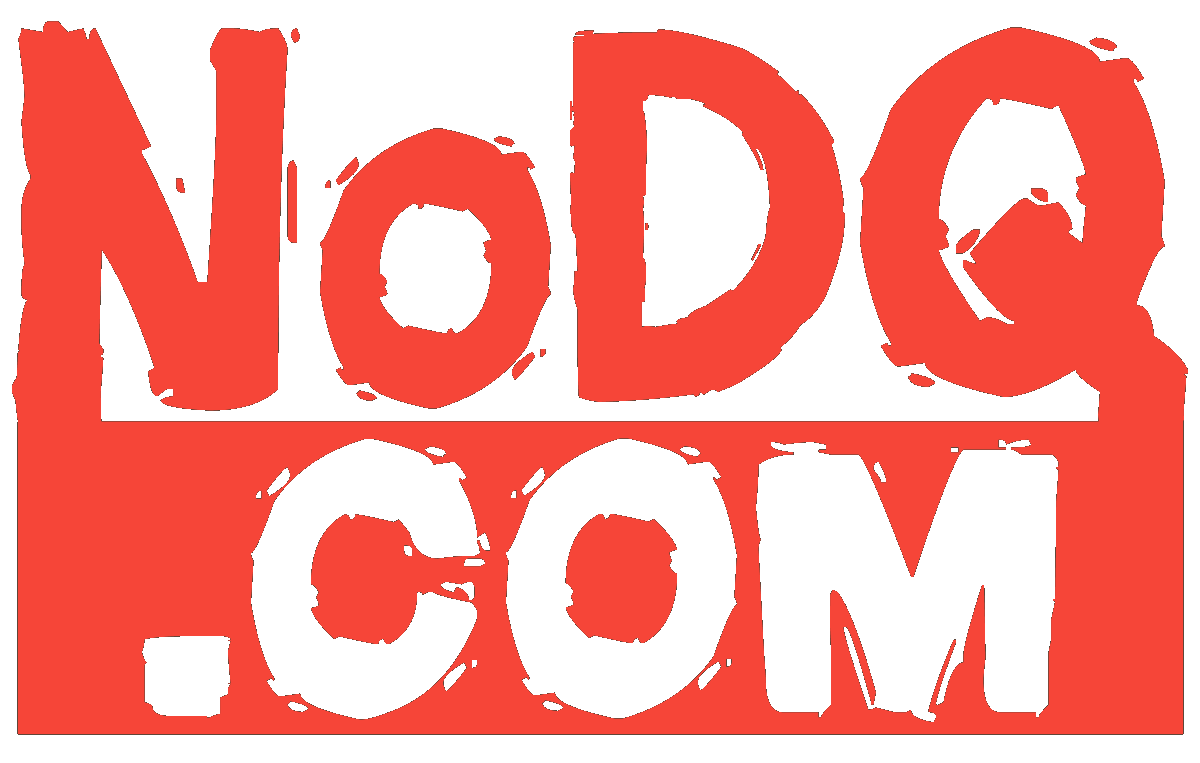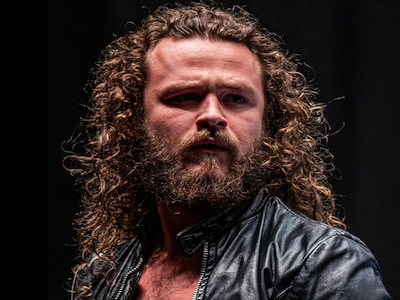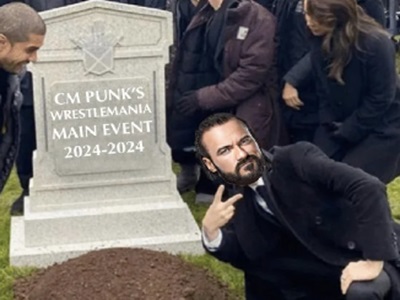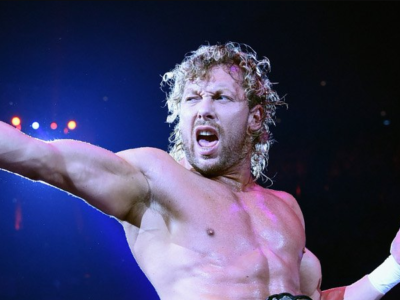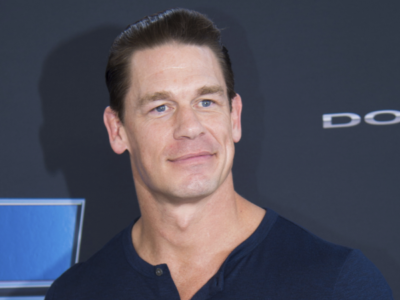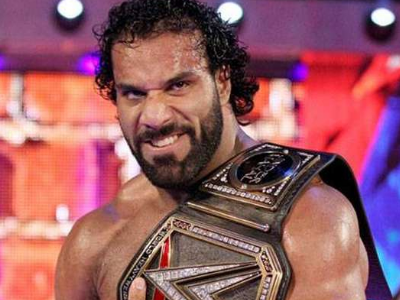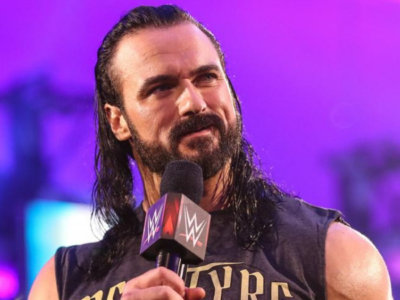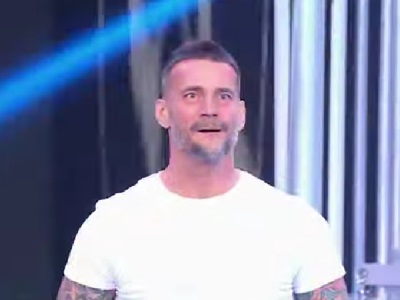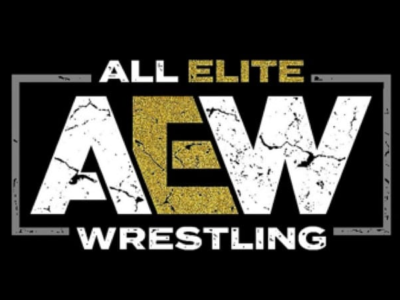How the Internet Saved Wrestling
Before we begin…
Hot Takes on Recent Happenings
-C.M. Punk may not be coming back to AEW. Good. The past few weeks of ratings over the million mark proves the roster is deep enough not to need him at all. Was C.M. Punk a generational iconoclast and prime professional wrestler? Yes. Does AEW need him? Not at all.
-Saraya is All Elite. While Khan still can’t spotlight women as well as they do in Stamford, I’ll take the W from Wednesday night. Saraya, Baker, Hayter, Athena, Storm, Deeb, Penelope, Anna Jay, Cargill — the division is getting stacked. Now let’s do something with it.
–AEW wrestlers asking for their release: GOOD. I don’t mean that to say ‘if you don’t like it, get out’ – but that in a young company, you simply won’t know what works and what doesn’t until you throw a few things at the wall to see if they stick. Would I have booked Malakai Black differently? Yes; probably as a dominant world champion, but that’s me. Other talents like Miro, Andrade, and others could be booked better as well. But that’s not my call — and if they ultimately fit better elsewhere and AEW is still thriving, then no harm no foul. As we’ve seen with WWE in past years, not everyone can be booked at the top of the card. It just doesn’t work like that in pro wrestling.
–
How the Internet Saved Wrestling

In this day and age of toxic fans, online harassment, and leaks to dirtsheets, some fans may argue that wrestling would be better off without the internet. As some have put it, the wrestling neckbeards have ruined the sanctity of professional wrestling with their adoration of spot monkeys, comedy gimmicks, and overly meta approach to the sport.
It killed kayfabe, right? There isn’t much that isn’t known about the wrestling business at this point.
But what if I told you that all of these arguments are baseless, and at best, mindlessly reactionary?
Let’s dig in.
–
Kayfabe (in the public eye) Was Dead a Long Time Ago
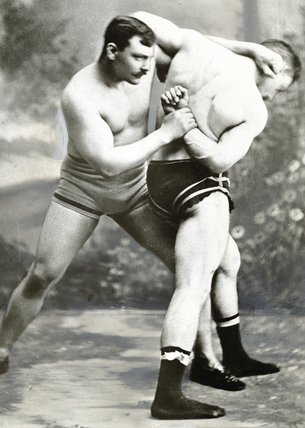
This is the first point I’m going to make. Do you know when kayfabe actually died in the eyes of fans? Around the late 1800’s.
I’m being serious.
I can cite a Boston Globe article from January 1st, 1882 that tried making a case that “worked wrestling” was on its way out. On April 23, 1882, the Courier-Journal out of Louisville called out some of the bigger names at the time of the worked nature of the business. Names like William Muldoon, Andre Christol, and John McMahon (no relation) were all on the hot seat for “working” their matches.
This only became more apparent during the formation of the Gold Dust Trio (Ed “Strangler” Lewis, Toots Mondt, and Billy Sandow) in the 1920s. These three would create the “slam bang” wrestling style that planted the seeds of the product we know today — a bit more over-the-top and overly-dramatic than a basic worked match.
They created the “flash” and “gimmicks” in wresting that would last for decades into the era of TV wrestling in the 1950s. My father, who raised me on wrestling, knew that wrestling wasn’t “real” — and he watched through the 60s, 70s, and to this day. When Jerry Lawler slapped Andy Kaufman (an amazing heel for being a comedian) on an episode of David Letterman in 1982, yes, most of the world knew it was a work.
At least I would assume so, right? Modern civilization can’t be that gullible, can it?
*checks news that QAnon supporters are on the rise*
Then again…
–
But Isn’t the Illusion of Kayfabe Still Alive?
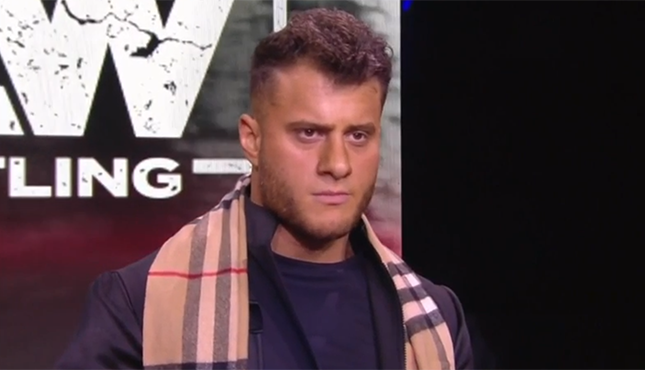
Yes and no.
It’s not like we went behind-the-scenes to an unscripted look at Moxley and Danielson talking through the spots for their AEW Championship match before the main event. To a large extent, kayfabe still exists in the presentation of the sport. Kayfabe has never really died in that sense, as everything is still presented as “real”.
But if you want to point to an ultimate break in kayfabe, look no further than Vince McMahon. In 1989 Vince McMahon and the then-WWF openly admitted before the New Jersey Senate that they were not a sport to try and avoid state and commission regulations.
You can also cite the appearance of McMahon on The Phil Donahue Show in 1992 regarding the ongoing drug abuse and multiple sex scandals within the WWF.
To top that off, add in the Montreal Screw Job, and the “Bret Screwed Bret” interview given after McMahon clearly screwed Bret Hart out of a winnable situation.
Another Vince, but by the last name of Russo, didn’t help matters either during the dying days of WCW with his utterly mad booking. Russo often tried to book storylines based off of “real life” backstage drama — and it was just a bad look for everyone involved.
But in the 90s, the internet was still in its infancy. Wrestling fans on Usenet forums would tape-trade to expand their knowledge of the sport, but it’s not like these fans weren’t privy to inside info. Many of these fans were potential long-time subscribers to the Wrestling Observer, a non-kayfabe magazine that treated wrestling like what it was — entertainment. But that magazine started in 1982; well before the internet wresting community.
Yes, the “illusion” has never died, but fans long know that it’s just that — an illusion. Even worked shoots maintain some level of kayfabe, as you never really know what’s 100% happening behind-the-scenes.
–
The Nostalgia Problem

So why do so many fans claim The Attitude Era was the best time for wrestling, and that wrestling’s best days are in the pre-internet past?
Nostalgia.
Much of what we experience in our early formative years can create either a long-lasting positive or negative emotion. If positive, such as a teenager watching Raw or Nitro (or both) in the late 90s, and absorbing themselves in the world of pro wrestling, they carry that with them.
Objectivity gets thrown out the window. If their past fond memories cloud their modern-day judgement of the product, fair objectivity doesn’t exist. For many mainstream fans, this also came with a lack of “insider” knowledge at their fingertips. Yes the information was out there, but it wasn’t in mass as it is today.
In 1997, only 19% of households had internet access. By 2011, that number jumps to 72%.
But isn’t that proof that the internet and insider terminology led to the “neckbeards” taking over?
Not at all. Insider jargon has existed in the Wresting Observer since 1982. Just because information becomes more readily available to the masses via the internet doesn’t place blame on the medium itself. Ignorance by lack of technological progress is no means for a personal scapegoat and excuse for a lack of enjoyment in today’s product.
Do you enjoy a horror movie less by seeing how artists created the gory special effects? Do you enjoy a sci-fi movie less by watching how actors are infused with CGI/Green screen tech?
Of course not; we know it’s entertainment. So why is wrestling treated any different?
Because wrestling almost died in 2001.
–
How Vince McMahon Almost Killed the Business

He almost accomplished this in 1983 when he bought out the TBS Superstation timeslot and replaced Georgia Championship Wrestling with his “cartoony” WWF product. While GCW fans would angrily write letters, and Jim Crockett ultimately bought back the timeslot, and brought GCW back, the damage had been done.
McMahon slowly raided the territories, swiping up top talent from AWA, WCCW, Mid-South Wrestling, and many others. When Hogan pinned the Iron Sheik for the WWF Championship in 1984, many purists saw this as the “day wresting died”.
In 2001, when Eric Bischoff made attempts to purchase WCW, AOL-Time Warner no longer had interest in airing a wrestling show on their networks. Bischoff’s partner (Fusient) then pulled out of the deal leaving him hanging.
But did McMahon have to buy WCW?
No, he didn’t.
Bischoff had plans to re-launch WCW, and it’s feasible that in due time, an investor/partner would have been found. Spike TV (then TNN), or another network could have been the home to WCW, same as they were for TNA. But WCW was an established name. It could have taken off and reignited the much needed competition in the early-mid 2000s.
But McMahon quickly swooped in to purchase WCW, and then proceeded to bury nearly all of the talent and WCW’s name along with it. So we’ll never actually know, will we?
–
How McMahon Conditioned a Generation

And with that, pro wrestling sat without any competition, and with one formulaic style for nearly two decades.
Just about every WWE match, even to the modern day, follows the same guidelines. Al Snow calls it the 7 Deadly Steps, which is the same formulaic style taught in OVW. Good for beginners to learn the craft, but all the time?
The steps are (taken from Reddit user Count_Sack_McGee):
-
Babyface shine – The face of the match looks good by doing a few moves to the heel.
-
Heat spot – Heel cuts the face off with some big impressive moves.
-
Extensive Heel Beatdown
-
The Hope Spot -It looks like the face will bounce back and the heel cuts him off. Again, the heel cuts the face off one more time.
-
The Double Down – Where both guys will take a hit and sell for a long time.
-
The Comeback – The face fights back against a heel that will stop defending himself.
-
The Finish/False Finishes – This is the first time that either guy will try to win the match.
You’ll never watch a WWE match the same again after reading these steps…
And it’s FINE. I’m NOT saying this is wrong — but when this is all you’re exposed to, it’s very limiting. Wrestling styles exist all around the world, from Japan to Mexico, to the Indies. Wrestling can look like many different things.
But for nearly two decades, any new wrestling fans only really had one choice and one style for a mainstream product. That is until the internet exploded into more homes than ever.
–
How the Internet Saved Wrestling
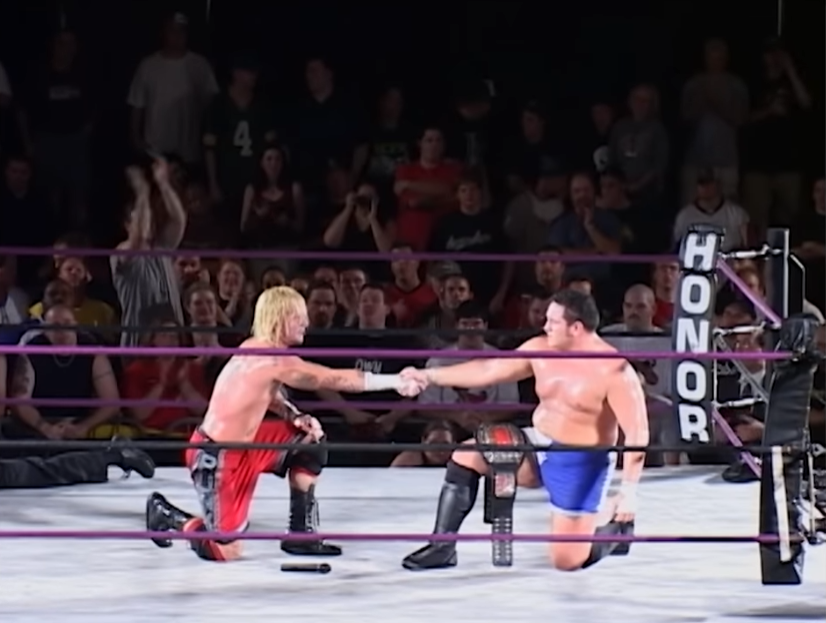
It’s 2019. Wrestling internet journalism has long told the truth about the business as a living, breathing work. Nothing was “exposed” about it — that was done all the way back in 1882.
But over the last 15 years or so a small movement was brewing.
Through wrestling torrents and eventual YouTube videos, smaller wrestling promotions started to gain the attention of fans who were kind of “meh” about the WWE product. These include Ring of Honor, Pro Wrestling Guerilla, CZW, and CHIKARA. Many were exposed to the frenetic high work-rate pace of Dragon Gate in Japan (which heavily influenced the Indies and high work-rates we see today as common).

And while, yes, TNA secured a TV deal in 2005, Jeff Jarrett was never a great booker, or a draw. He failed to do so in not pushing his future stars soon enough (Joe, Styles, MCMG, Brown, etc.). Hogan and Bischoff would completely ruin TNA/Impact when they came into the fold. The product just became a lighter version of WWE.
This underground wrestling sentiment lay dormant for well over a decade. But man, is it hard to keep up on. Part of the magic of pro wrestling is that when it’s live, anything can truly happen. Sure, you can go back and watch a taping, but it’s just not the same. When you’re an Indies fan, this was all too common.
It becomes tiresome to wait to torrent New Japan events, and catch the occasional matches uploaded to YouTube. Accessibility sucks, and even though some had NXT as an “alternative”, it was still treated as beneath the overall WWE product.
And then came All In 2018…
–
All Elite Wrestling
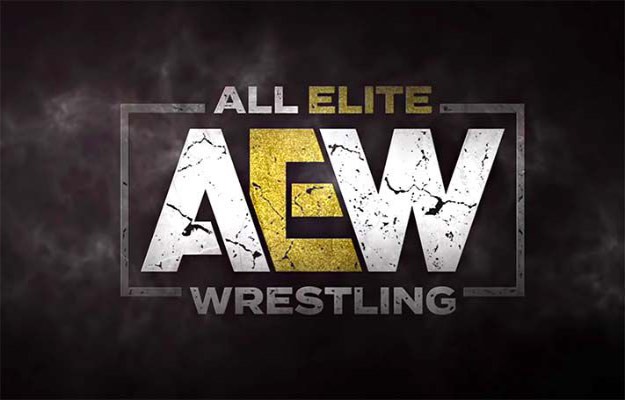
For All In, held on 9/1/2018 — The Young Bucks and Cody Rhodes partnered with Ring of Honor to sell over 11,000 tickets in the Sears Center in Chicago, and 50,000 PPV buys — a feat for what was an independent wrestling show.
By 2019, WWE had lost over half of their viewing audience in ratings over a 10-year span. It was clear what was happening. Wresting fans around the world had been itching for a legitimate alternative to McMahon’s WWE for well over a decade.
In the same year, All Elite Wrestling would arrive, carrying many of these fans with it to WarnerMedia networks. Now unless you think competition is bad for the industry, and only believe one style of wrestling should exist in the entire universe — this was one of the best things to ever happen to professional wrestling.
This isn’t the days of TNA where Dixie Carter and Panda Energy half-ass ran the company. Like him or not, Tony Khan has deep pockets, and helps run two other major sports franchises along with it. For the first time since the days of the Monday Night Wars, Vince McMahon had competition — not only in a mainstream product, but in a financial sense as well.
Finally, there is a legitimate alternative that fans can enjoy on a weekly basis on a major network. They’ll have their growing pains, and ups and downs; but with consistently good numbers, they aren’t going anywhere.
If you’re a fan who actually wants to see the end of a competitor, then I question your ability to be an honest wrestling fan that wants what’s best for the business. Hell, I don’t even watch WWE, but I still want them to be successful. The success of both AEW and WWE is crucial to the health of professional wrestling.
–
We’re All Internet Fans
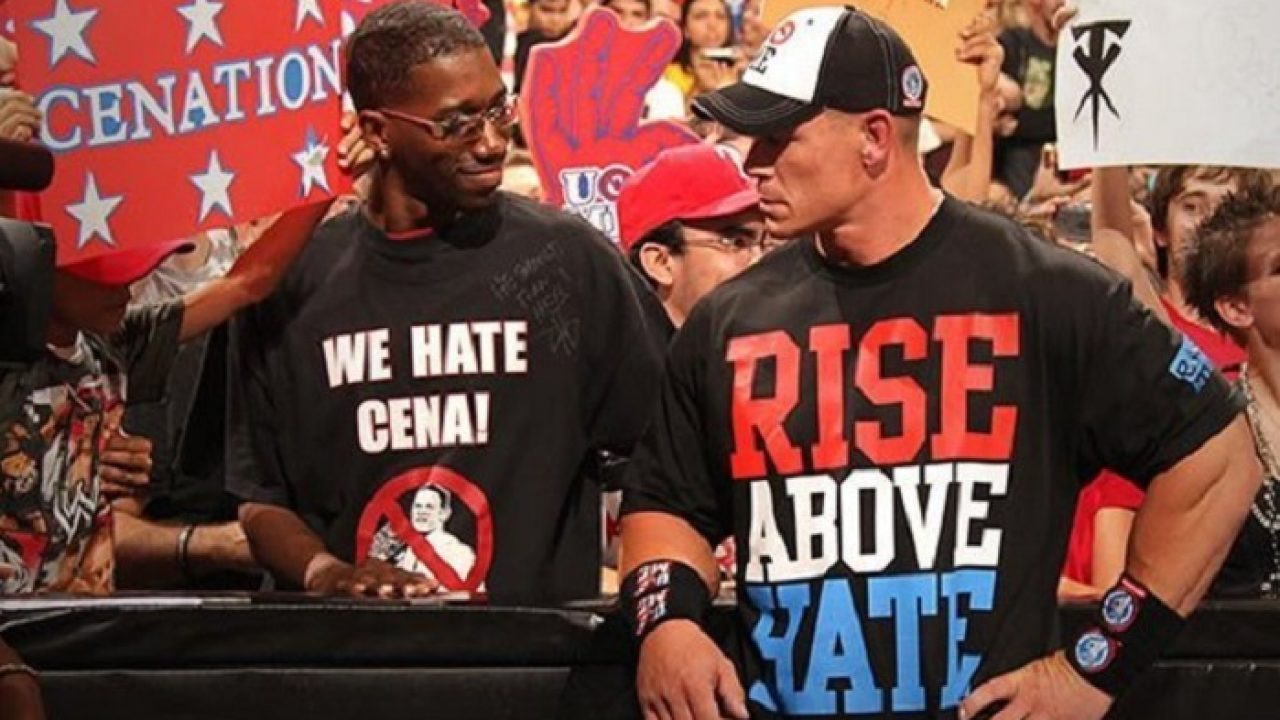
Bit of a long one, eh?
Some may read this as me just putting AEW on a pedestal. But it’s really not that. I’ve seen so many comments bashing “internet fans”. Guess what? We’re all internet wrestling fans now.
Wrestling has evolved into this very meta place where fans are just as an important part of the show as the wrestlers. Take a look at the recent success of The Acclaimed. Caster and Bowens are fantastic, but the overwhelming support of the AEW fans pushed them to their recent tag team title win.
And sometimes even dirtsheets can get it wrong — as many reported that Saraya was “interested” in AEW, but not close to signing. Her appearance at Grand Slam was quite the pleasant surprise…
As fans, we now have everything at our fingertips. We have access to different wrestling styles, a plethora of matches through Fite TV or other wrestling streaming services, and a look back at what was with the WWE network (and maybe HBO Max with AEW).
We are the most educated fan base in wrestling history. With that, we can now watch with such vast knowledge, and we can appreciate the sport now even more with what we know.
What we do with this knowledge is greatly important. We can either bicker like children and create online toxicity through stupid tribalism, or we can appreciate how far wrestling has come. This is a craft that was assumed all-but-dead as far back as 1882. Well over 100 years later and here we are — two major promotions on two major networks; and a wide array of different and unique wrestling styles and promotions online and around the globe.
It’s a great time to be a wrestling fan; and it’s because of the internet.
-OMC
